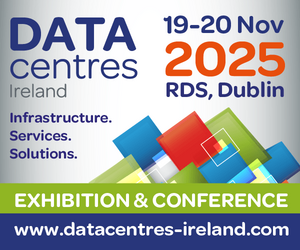Meanwhile, the spectre of decentralisation, which exercised the thoughts of so many last year appears to have slipped down the agenda. Nevertheless, the implications are immense. Take staffing for example. According to official figures published last year, the overall number of civil servants and state agency staff willing to relocate with their organisations is just 7.5 per cent and 2.5 per cent. The figure is as low as zero to 2.5 per cent in areas that depend heavily on specialist staff.
<br />Curt Adler PhD, head of public sector at Hewlett-Packard, says decentralisation is primarily a political challenge because of the people issue. The parallel task of centralising ICT represents another challenge. “Breaking out of a departmental focus to move to the centralised provision of IT services is inevitable, but it’s going to meet with some resistance.”
O’Riordan believes decentralisation would encourage consolidation of back office functions across government departments and the centralisation of administration. “Decentralisation was forcing some of these things to happen,” he says. “Why does every department need to have the same administrative functions? An awful lot of administration needs to be centralised.”
An interesting forthcoming development is centralised purchasing. Adler says he has been “extraordinarily impressed with the vision the government has and the talent it’s applied to resolving this issue. The government is very much stepping up to the plate and it will provide a significant benefit to the taxpayer.”
O’Riordan doesn’t see what benefits the system will bring if departments can opt in or out of framework agreements. “Ultimately, everybody can still do what they want. The government is spending huge amounts of money on IT but it’s not getting the economies of scale. There isn’t an overall IT strategy for government.”
Sean Connolly, director of ICT at Revenue, accentuates the positives from IT. “There are opportunities for the public sector provided by technology. For example, people can now text in their bin charges. Technology will continue to offer new challenges and opportunities to provide services to the public. Ten years ago, none of this stuff existed – and ten years is a very short time in the history of the public service. Amazing and exciting things can be done [using IT].”
The Reach project is important in providing citizens with a common, single, secure access to state services, but it raises questions over how we manage the multiple identities we employ to access them. “Is there a need for a national identity card?,” Connolly asks. “We have it in practice with the RSI number. The last thing people want is multiple identities for dealing with the state. It’s better to have one point of access with varying levels of security depending on what you’re doing.
O’Riordan also believes people are heading for an overload of user IDs and passwords. “You’ve got to make it easy for people to access, while making sure it’s secure.”
Security is a big issue for the public sector, according to an IDC survey undertaken last year where it topped the poll. Connolly says it’s not new and the provision of online services has led to a renewed concentration on safeguarding systems against the threat posed by the Web.
“We need to manage the risk. The state runs on transaction systems. Minimising the risk of anything happening is a major issue.”
Connolly is convinced IT will “ultimately lead to a transformation in the way government is organised. Demarcation between departments will become less justified. The range of possibilities is still expanding. The scope for imaginative deployment of technology is as great as it ever was. We’re still scratching the surface.”
O’Riordan agrees that the “boundaries are infinite” with IT but warns “there’s got to be a benefit. Technology does not become an inhibitor when it delivers benefit.”







Subscribers 0
Fans 0
Followers 0
Followers